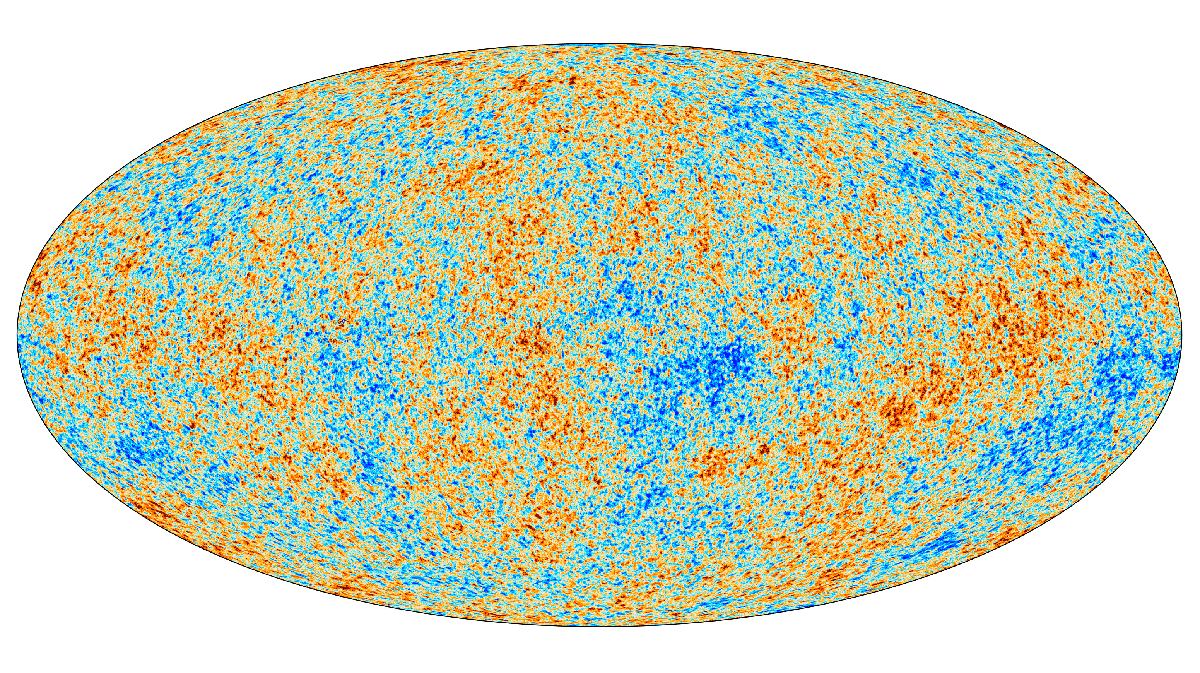

The Cosmic Microwave Background: temperature and polarisation
The anisotropies of the cosmic microwave background, or CMB, as observed by ESA’s Planck mission.
The CMB is a snapshot of the oldest light in our cosmos, imprinted on the sky when the Universe was just 380 000 years old. It shows tiny temperature fluctuations that correspond to regions of slightly different densities, representing the seeds of all future structure: the stars and galaxies of today.
The top view shows anisotropies in the temperature of the CMB at the full resolution obtained by Planck. In the middle view, the temperature anisotropies have been filtered to show mostly the signal detected on scales around 5º on the sky. The lower view shows the filtered temperature anisotropies with an added indication of the direction of the polarised fraction of the CMB.
A small fraction of the CMB is polarised – it vibrates in a preferred direction. This is a result of the last encounter of this light with electrons, just before starting its cosmic journey. For this reason, the polarisation of the CMB retains information about the distribution of matter in the early Universe, and its pattern on the sky follows that of the tiny fluctuations observed in the temperature of the CMB.
These images are based on data from the Planck Legacy release, the mission’s final data release, published in July 2018.





